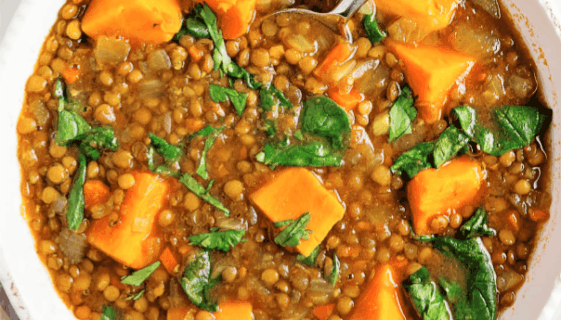These deliciously fluffy and slightly charred homemade turmeric flatbreads couldn't be easier to make (check out our how-to video). Even though they are yeast-free, you still get all the satisfying tastes and textures of homemade bread without the fuss. The turmeric/black pepper combo adds great flavor and is an anti-inflammatory, antioxidant, anticancer, and mood-supporting boost.
These versatile flatbreads are sure to become a household staple. Use them as a base for your favorite healthy sandwiches, serve them with tasty dips, curries, and soups, or transform them into pizzas. They can also be prepared gluten-free or vegan. Try adding different herbs and spices to add variety to the flavor profile. These flatbreads store and freeze well and can be quickly reheated. They are a great addition to any meal!
Homemade Turmeric Flatbread
Serves: 4
Ingredients
-
1 ¼ cup all-purpose flour or gluten-free flour (my favorite is Pamela’s gluten-free bread flour or Bob’s Red Mill 1 to 1 baking mix)
-
½ cup yogurt (dairy or non-dairy)
-
¼ teaspoon baking powder
-
¼ teaspoon salt
-
¼ teaspoon turmeric
-
Sprinkle of black pepper
Optional addition flavorings: 1/2 teaspoon dried herbs (oregano, basil, rosemary, thyme, or Italian seasoning) or 2 teaspoons chopped fresh herbs (basil, cilantro, rosemary, thyme, or oregano) or ¼ teaspoon other spices (cumin, garlic, coriander or paprika)
Directions
-
Whisk together the flour, salt, turmeric, black pepper, and baking powder in a large bowl. Add in the yogurt, and with a wooden spoon or rubber spatula, mix until the ingredients come together.
-
Use your hands to bring the dough together fully. If using all-purpose flour, transfer to a lightly floured surface and knee for five minutes until the dough feels smooth. If using gluten-free flour, kneed the dough in the bowl for 2 minutes until the dough feels smooth.
-
Cover the dough with a damp, clean kitchen towel or parchment paper and let it rest for 20 minutes.
-
Divide dough into 4 equal pieces. Form each piece into a ball and place between two pieces of parchment paper or on a lightly floured surface. Using a rolling pin or your hand flatten each ball of dough to approximately 1/4 inch thick round.
-
Heat a nonstick or cast-iron skillet over medium high heat and add a tiny bit of oil or butter or ghee and cook the flatbreads for 2 to 3 minutes, flip it when it begins to puff up and is golden brown then cook for 1 to 2 more minutes on second side.
Storage: Store any leftovers in an airtight container for up to 5 days in the fridge. You can reheat them on a warmed skillet with no oil or butter for a couple minutes on each side. Or you can place them in a 400°F oven for five minutes.
Freezing Instructions: Freeze flatbread in freezer safe container stacking the flatbread and separating each piece with parchment paper. Thaw flatbread in refrigerator overnight and then reheat.
Serve it with: Lentil soup, broccoli leak soup, carrot ginger soup, curry butternut squash soup, curry salmon, white bean and tomato stew
Dip it with: Beet hummus, carrot hummus, edamame yogurt dip
Top it with: (All sandwich, taco and bagel toppings work well)
- Cream cheese + smoked salmon + avocado + capers + arugula
- Hummus + tomatoes + cucumbers + parsley + feta
- Tuna or Chickpea salad + lettuce + tomato + pickles
- Any roared vegetables + hummus + baby spinach
- Black beans + lettuce + tomato + avocado + salsa + jalapeños
Turn it into a pizza: Marinara sauce or pesto + cooked veggies (personal favorite is spinach and mushrooms)+ mozzarella. Add toppings and bake in a 450°F oven for five minutes until the cheese has melted. Finish with fresh basil.



 Ananda Kaplan
Ananda Kaplan


